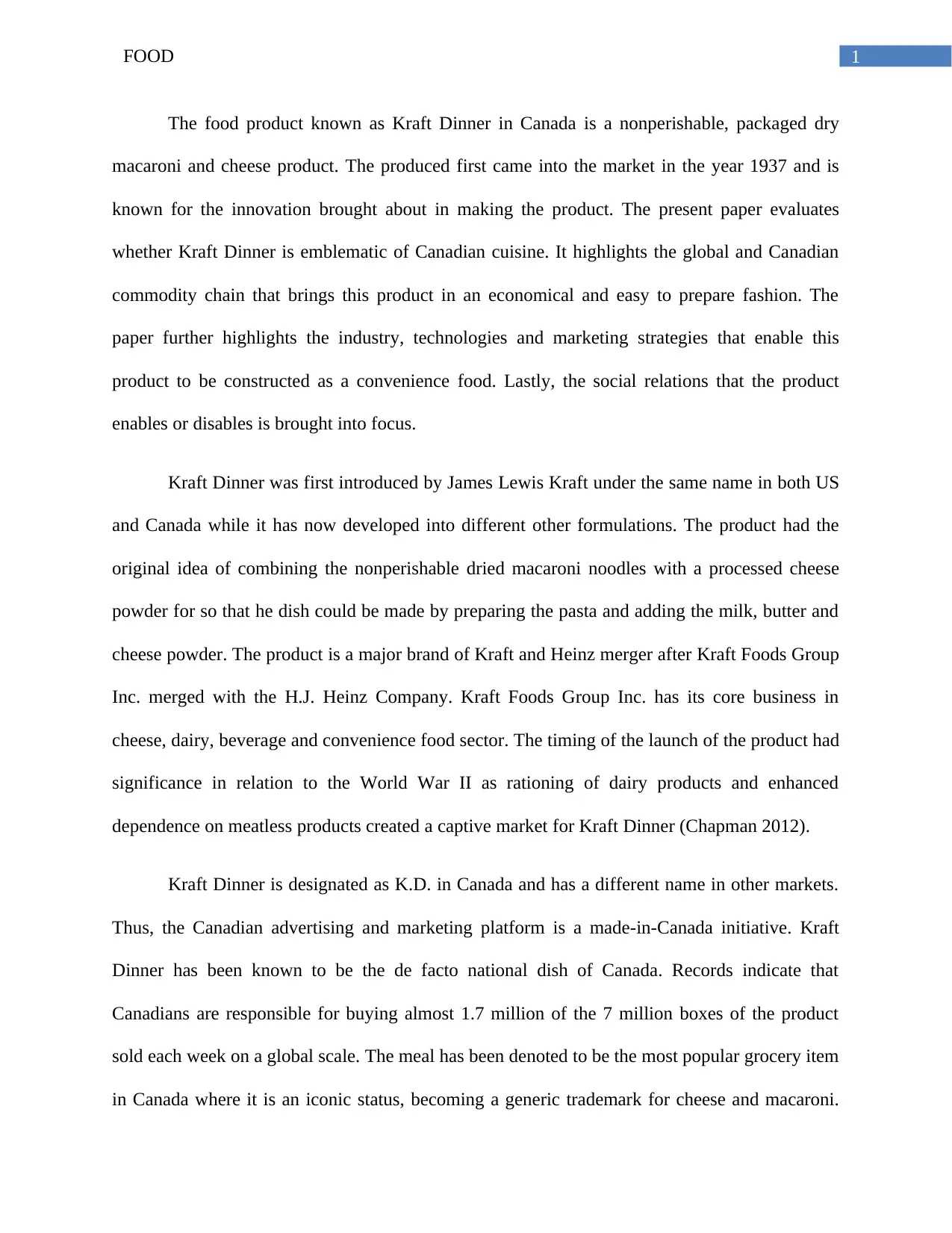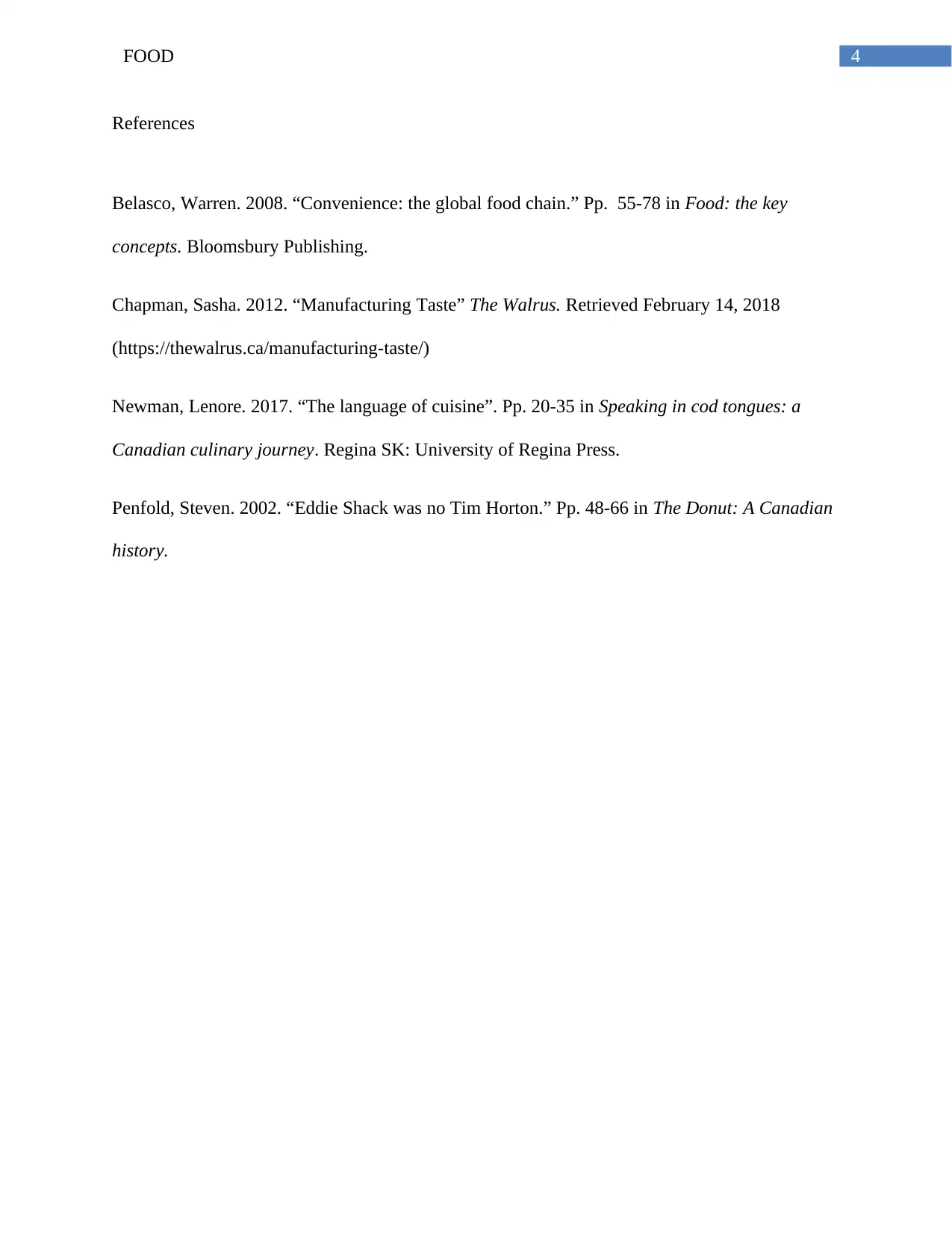Kraft Dinner: Emblematic of Canadian Cuisine
VerifiedAdded on 2023/06/15
|5
|1021
|413
AI Summary
This paper evaluates whether Kraft Dinner is emblematic of Canadian cuisine. It highlights the global and Canadian commodity chain that brings this product in an economical and easy to prepare fashion. The paper further highlights the industry, technologies and marketing strategies that enable this product to be constructed as a convenience food. Lastly, the social relations that the product enables or disables is brought into focus.
Contribute Materials
Your contribution can guide someone’s learning journey. Share your
documents today.
1 out of 5









![[object Object]](/_next/static/media/star-bottom.7253800d.svg)